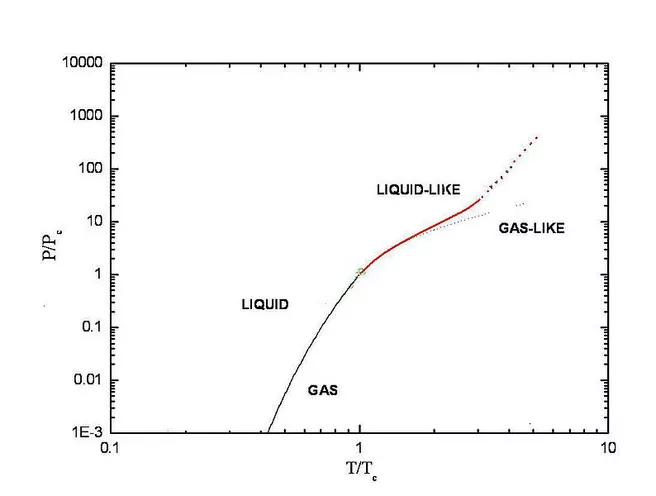Dr. Giovanna Giulia Simeoni, post-doc at the neutron source FRM II, has proven in her PhD thesis, that the theretofore called “supercritical fluid phase” actually includes two distinct phases: a liquid-like and a gas-like one. Although not accompanied by an abrupt change of volume (as in the case of the subcritical liquid-gas transition), the transition between these two phases is quite sharp and thermodynamically determined by the “Widom line”. This first fundamental insight into the supercritical fluid behaviour, which could be extended by means of neutron scattering at the FRM II, is published in the renowned journal Nature Physics.
Up to date, there was no physical observable sensitive to any further (thermo)dynamic distinction beyond the critical point. Dr. Giovanna Simeoni, Dr. Mario Santoro and colleagues studied the propagation of the hypersonic waves in the supercritical fluid argon, experiencing both high pressure and high temperature. How local fluctuations of groups of atoms affect acoustic properties, depends on the state of aggregation of the matter.
From inelastic X-ray scattering data, Simeoni and co-workers argued the possibility of two distinct sound propagations: liquid-like and gas-like, reminiscent of the subcritical dynamical behaviour.
Dr. Giovanna Simeoni, who is second instrument responsible at the time of flight spectrometer TOFTOF at the FRM II, would like to use neutrons now, to extend the investigation of the supercritical fluid phase. A deep understanding of this phase of the matter would play a crucial role in many fields of basic science as well as industrial applications, ranging from planetary physics to nanotechnology and waste processing.
“We have to develop a completely new thermodynamics beyond the critical point. Neutrons can lead to additional and complementary information to X-rays”, explains Simeoni. This is one of the main purposes, for which the 28-year-old develops a focussing neutron guide for the instrument TOFTOF. It will concentrate the neutron beam to a field of 0,5 times 0,5 squared centimetres, which is fundamental for achieving highest neutron flux on the small size of the typical high pressure and high temperature cell required for these kind of experiments.
Original publication:
The Widom line as the crossover between liquid-like and gas-like behaviour in supercritical fluids
G. G. Simeoni, T. Bryk, F. A. Gorelli, M. Krisch, G. Ruocco, M. Santoro and T. Scopigno
Nature Physics
Published online: 6 June 2010
DOI: 10.1038/NPHYS1683
